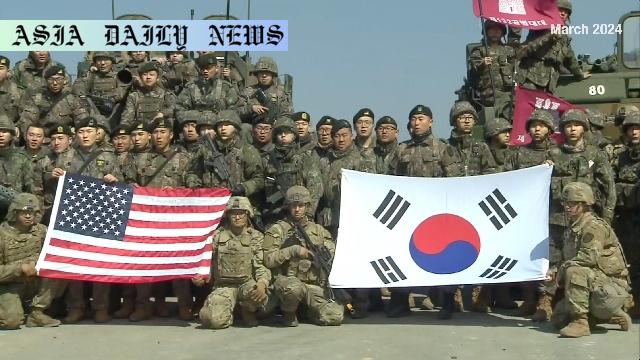Military Exercise: The US-South Korea Freedom Shield focuses on emergencies projected for the Korean Peninsula amid rising tensions.
Key Point 1: The US and South Korea to commence the annual Freedom Shield exercise starting Monday.
Key Point 2: The drill focuses on Korean Peninsula emergencies and North Korea’s projected strategies.
Key Point 3: North Korea strongly opposes the exercise, heightening regional tensions.
Key Point 4: The event spans domains such as land, sea, air, cyber, and space.

US-South Korea Joint Exercise: A Force to Be Reckoned With
The Freedom Shield military exercise, a critical annual event for the US and South Korea, kickstarts this Monday and continues through March 20. The exercise, outlined to mirror possible emergencies on the Korean Peninsula, demonstrates a keen focus on North Korea’s expected strategies and tactics. With escalating security concerns, this cooperation underscores the strong alliance between Washington and Seoul. Furthermore, it showcases an integrated approach with training efforts spanning across land, sea, air, cyberspace, and even space domains.
With the participation of around 70 field training sessions, this drill exemplifies both nations’ commitment to regional stability and deterrence against threats. Given the multifaceted nature of modern warfare, these exercises play an indispensable role in readiness and alliance strength. This continuity is particularly significant as it is the first drill undertaken during the current US administration, following President Donald Trump’s policy adjustments in the region.
Pyongyang’s Rising Antagonism
North Korea, unsurprisingly, has vocally opposed these developments. Terming the exercise as aggravatory, Pyongyang’s state-run Korean Central News Agency labeled the drill as a “storm of aggravating the security situation” on the Korean Peninsula. The strong rhetoric from North Korea hints at escalating hostilities. In addition, its deepening military ties with Moscow raise new questions about cooperation among adversary nations. Regional analysts believe such military posturing and rhetorical warfare could increase the potential for incidents around the peninsula.
With heightened stakes, the joint drills assume even more importance for understandable reasons: they are not just a show of theoretical might, but a demonstration of both readiness and the alliance’s ability to respond swiftly to provocative actions. Thus, the Freedom Shield exercise imparts a strategic signal to its opponents while continuing to support peace and security in the broader region.
The Strategic Implications for the Korean Peninsula
The Freedom Shield exercise is as much about the present as it is a look into potential future scenarios. Military collaboration at this scope entails detailed strategy simulations addressing hybrid warfare, cyber threats, and other emerging challenges. Quite interestingly, drills on space domains indicate a deliberate attempt to factor in the evolving dimensions of 21st-century defense. Seoul and Washington are well aware that their posturing will have ripple effects far beyond the Korean Peninsula.
By methodically strategizing drills across key defense areas, both nations forge a comprehensive roadmap for an increasingly unpredictable security environment. It’s no secret that these initiatives might invite further rebukes from Pyongyang. However, the meticulous preparation and interactivity of the forces have affirmed allies’ coalesced intentions for a stable geopolitical framework.
Commentary
Strategic Reassurance Amid Regional Uncertainty
The US-South Korea joint exercise, Freedom Shield, comes at a critical juncture in global and regional politics. With North Korea’s increasingly antagonistic tone and its bolstered cooperation with Moscow, the timing of this military drill is both necessary and symbolic. It reaffirms the strategic alliance between Seoul and Washington while serving as a daunting message to geopolitical adversaries. Importantly, it highlights the grounded reality of applying force readiness across domains like cyber and space while maintaining essential traditional preparedness in air, land, and sea zones.
A Double-Edged Sword for Diplomacy
On one hand, international defense collaborations like Freedom Shield uphold regional stability in times of uncertainty. Yet, on the flip side, they risk inflaming tensions with adversaries—in this case, North Korea. Pyongyang’s condemnation of these exercises as provocations was expected, but the intensity of its rhetoric continues to rise remarkably. With the Korean Central News Agency going as far as to issue strong warnings of “horrible price double jeopardy,” South Korea and the US walk on a thin edge of deterrence and provocation.
Creating a Legacy of Preparatory Excellence
It’s important to underline that drills like this not only safeguard allied interests across borders but also set standards for future adaptive strategies. It’s easier to criticize than understand the need for such meticulously organized contingencies. As power equations keep shifting globally, these real-time readiness practices effectively serve as precedent-defining efforts reshaping tomorrow’s alliances.


